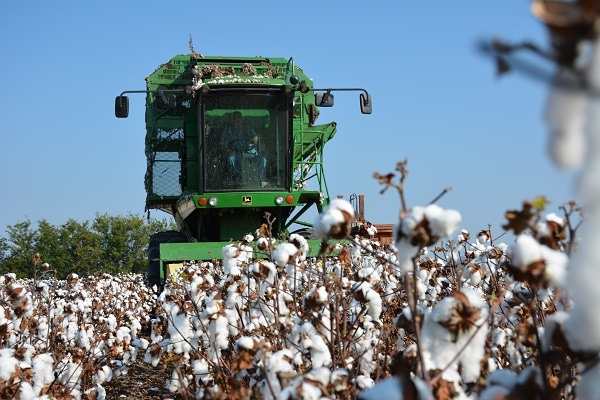
Extension cotton specialists make the case about this time every year: Variety selection is the most important decision cotton producers will make as they get ready to plant.
That annual advice, almost a cliché at area and regional production meetings, comes with a bit more urgency this year as producers look at some new variety options that include new technology. They also face a market that’s, at best, disappointing. And they will plant their first crop under a new farm law that leaves cotton dependent on insurance to cover price or yield losses.
Gaylon Morgan, Texas A&M AgriLife Extension state cotton specialist, College Station, says every other decision a cotton farmer makes during the growing season will relate in one way or another to the variety he selects.
Fertility, moisture management, weed control, insect management, plant growth regulator application rate and timing, harvest date and quality characteristics depend in part on the variety planted.
Morgan, speaking at the recent Red River Crops Conference in Childress, Texas, recommended that growers plant multiple varieties, based on data from multiple years of trials and across multiple locations.
For the latest on southwest agriculture, please check out Southwest Farm Press Daily and receive the latest news right to your inbox.
“Choose technology based on specific field challenges and production expectations,” he added. “Choose varieties that can help you spread risk and are complimentary to one another.”
Randy Boman, research director and cotton Extension program leader at the Oklahoma State University Southwest Research and Extension Center in Altus, said variety selection this year should take into account the loan value, weed control issues (including new herbicide-tolerant technology), and potential to reduce various production risks.
Quality counts
“Fiber quality will be important this year,” Boman said. That information, along with yield and production efficiency, is included in variety trial data both from university research plots and large on-farm plots on cooperating farmers’ fields. “We spend a lot of time evaluating varieties, and the importance of that has been noted in a recent Cotton Incorporated grower survey” Boman said.
Morgan said current low prices for cotton make the quality issue even more important. Farmers get paid for pounds but the market now demands higher quality. “Lower prices mean we need to pay more attention to quality. With current prices, a 1-cent change in the loan value represents a 2-percent change in gross income,” he said. “Also, higher quality is required to maintain our export markets and to attract buyers.”
With only 20 percent of the U.S. cotton crop used domestically, the industry must pay attention to what foreign buyers want. That’s mostly cotton that performs well in ring spun facilities. “They look for length, strength and fineness,” Morgan said. “Domestic mills’ priorities are strength, fineness, length and cleanliness.”
Some quality characteristics come mostly from genetics. Staple length, for instance, relies mostly on genetics, 82 percent versus 18 percent from environmental factors. Micronaire influence comes mostly from environment, 59 percent, but variety also has a strong influence at 41 percent.
Color comes mostly from environment, 79 percent with genetics contributing 21 percent. Strength comes mostly from genetics, 90 percent with only 10 percent derived from environmental factors.
Boman said Extension and research goals seek to improve efficiency and reduce production risk. Factors to accomplish those goals include yield stability across a wide range of moisture regimes. They look for yield, storm-proof traits and specific plant types to fit specific situations. “We also need to maintain a diverse selection of herbicides and weed management technology, especially for resistant weeds.”
Goals also include varietal response to disease, nematode and insect pests. The seed and plant protection industries, he said, offer resistant or tolerant varieties and chemistry to protect cotton.
Trials offer guidelines
Boman and Morgan showed selected variety trial results for recent years. Trials may be accessed at:http://cotton.okstate.edu/variety-tests and http://varietytesting.tamu.edu/cotton/index.htm
They also discussed the recent deregulation or lack thereof of new cotton traits, varieties tolerant to dicamba and 2, 4-D herbicides. Limited germplasm tests in 2014 have shown good production and quality response from the new dicamba-tolerant lines evaluated and they observed no “yield drag” in the field from the entries that are anticipated for release.
Two new systems will be available soon. Monsanto offers XtendFlex technology that combines varieties tolerant to glyphosate (Roundup), glufosinate (Liberty) and dicamba herbicides. Assuming that deregulation of the Enlist trait in cotton stays on track, Dow AgroSciences could launch varieties with that package in 2016. The Enlist triple-stacked herbicide trait includes tolerance to glyphosate, glufosinate and their proprietary low volatile Colex-D 2, 4-D product.
XtendFlex trait technology was deregulated in January and five varieties from Monsanto’s Deltapine, as well as other seed partners, will be available on a limited basis this year, but the label for use of dicamba in-season has not yet been granted by EPA. In 2015, bags of these varieties will include a warning that applying dicamba to cotton in-season is an illegal use.
Ty Witten, Monsanto cotton specialty crop product management lead, said for 2015, “dicamba will not be used in-season on cotton.” The new Deltapine triple-stacked varieties will be priced the same as Bollgard II Roundup Ready Flex cotton. Monsanto would not charge cotton producers for dicamba tolerance technology they will not be able to use. “They also get glufosinate (Liberty) tolerance in these varieties,” he said.
Boman said Dow has the opposite challenge. Dow’s herbicide, Enlist Duo, has received a label in some states where a limited introduction of Enlist corn and soybeans will be available, although it is not yet approved for Texas and Oklahoma.
About the Author(s)
You May Also Like






